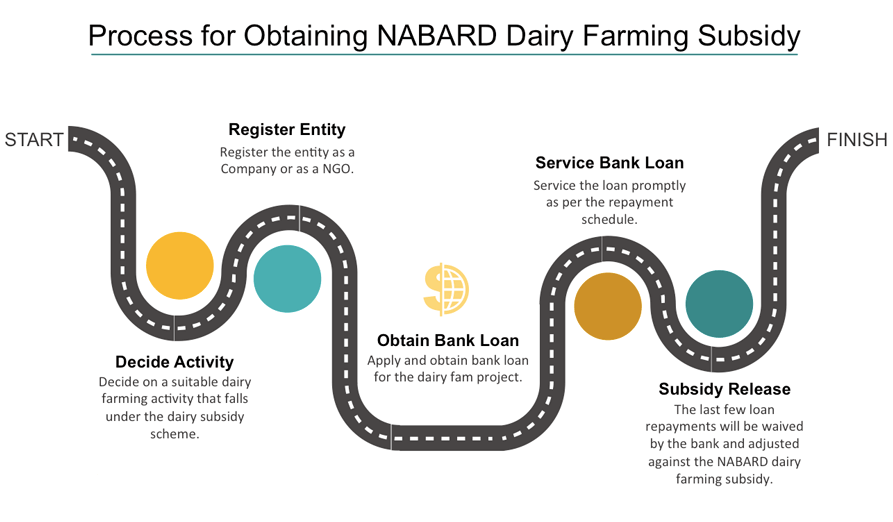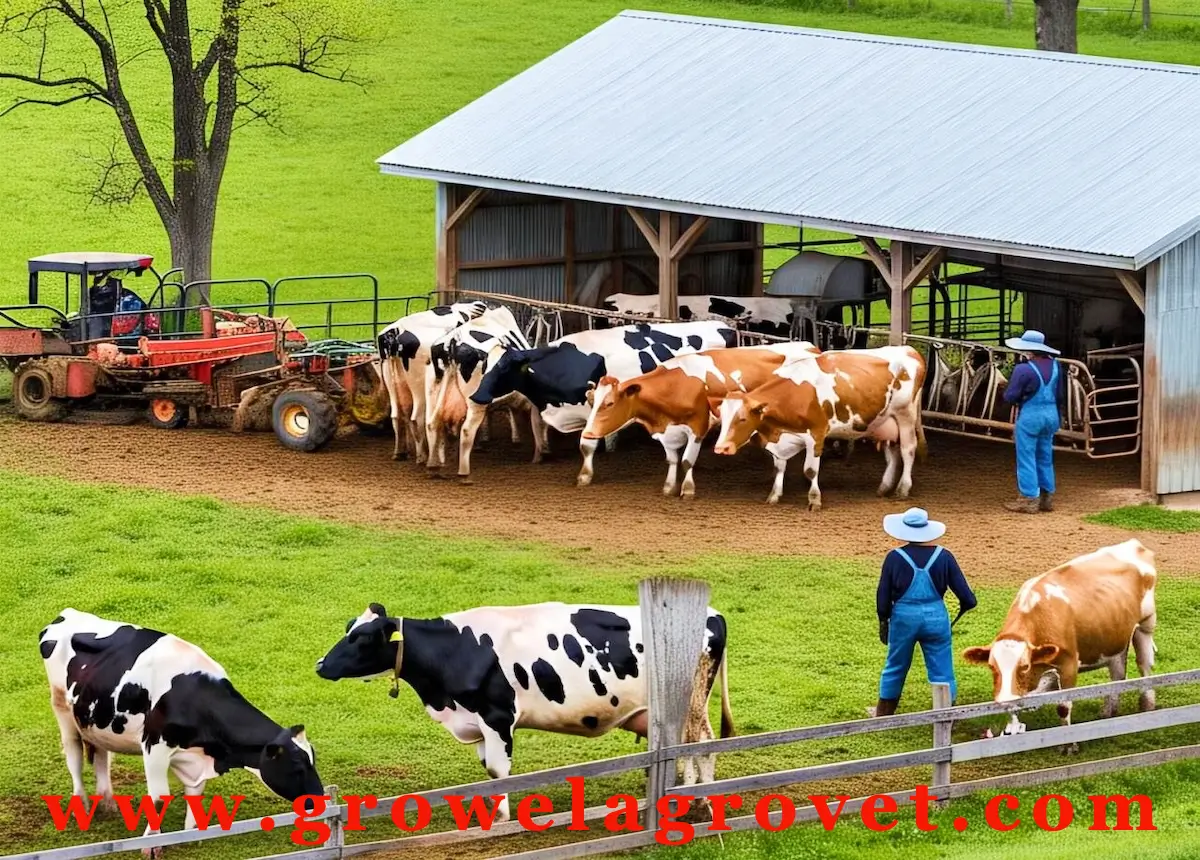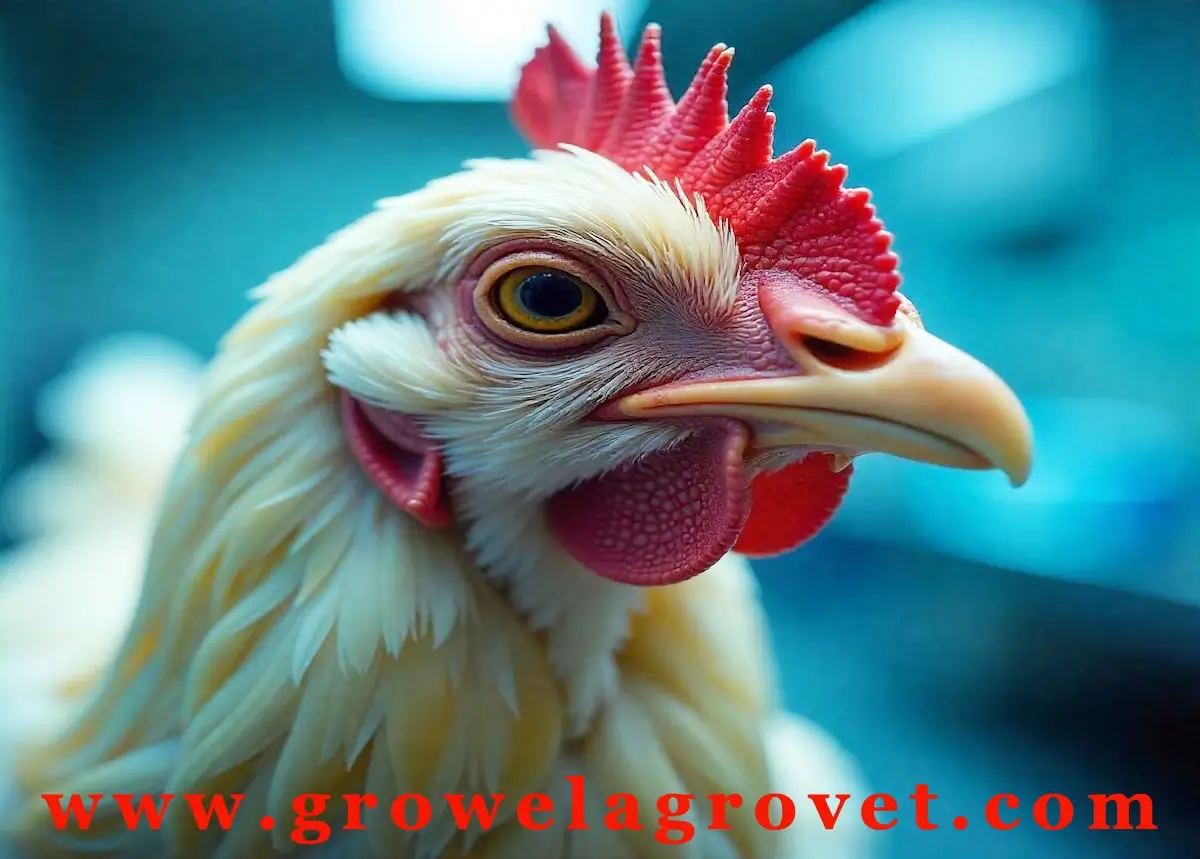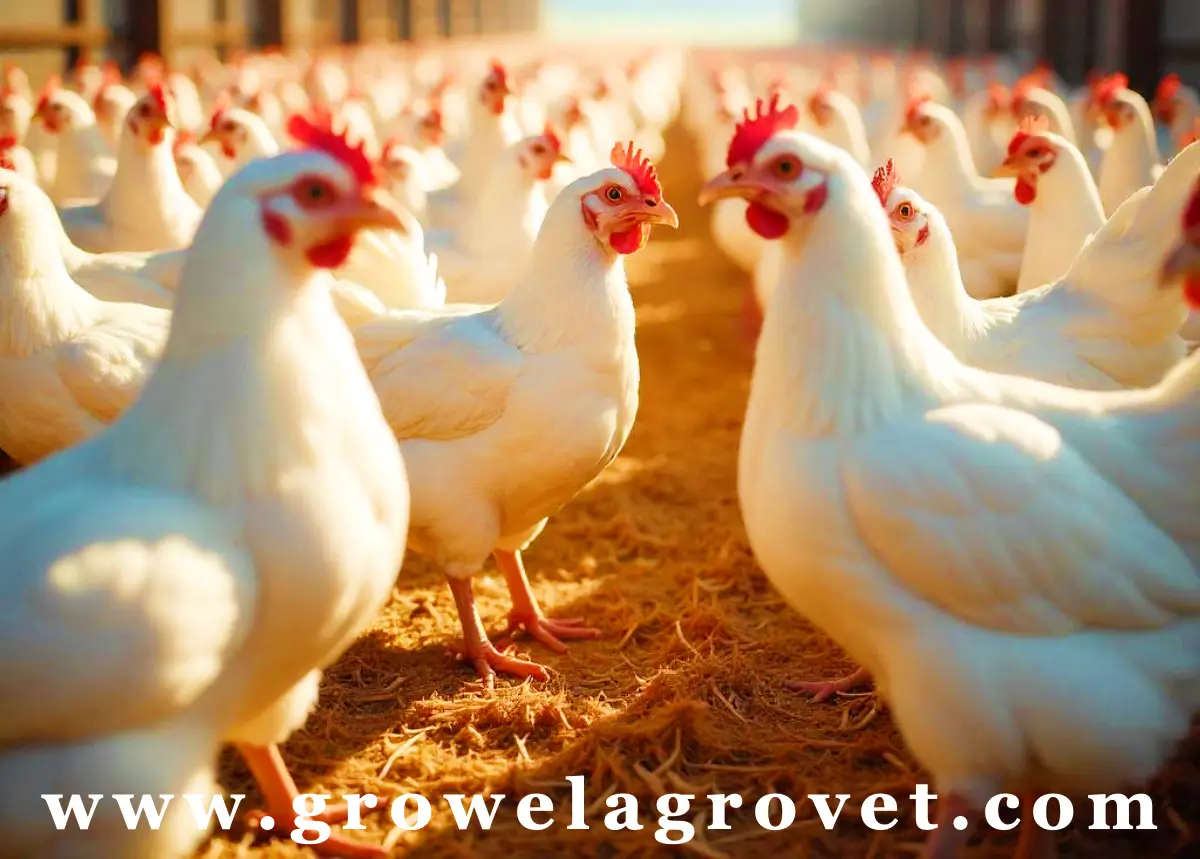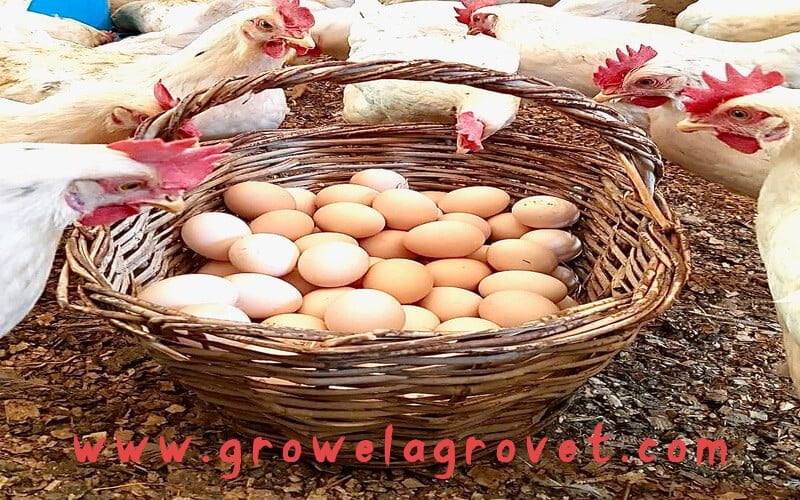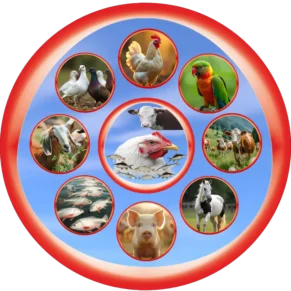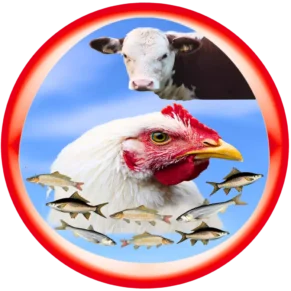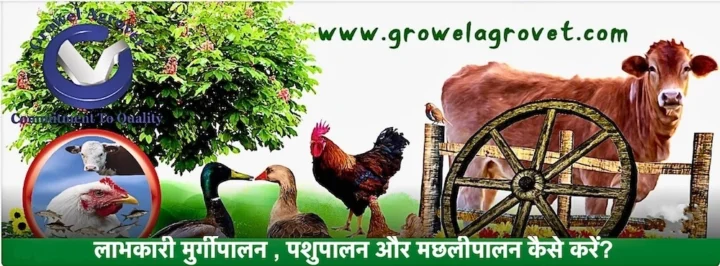Dairy farming is a large unorganized sector in India and a major source for livelihood in rural areas. In an effort to bring in structure into the dairy farming industry and provide assistance for setting up dairy farms, the Department of Animal Husbandry, Dairying and Fisheries launched the “Venture Capital Scheme for Dairy and Poultry” in 2005. The scheme provided for interest free loans for setting up dairy units and as of 31st March, 2010 nearly 15,268 dairy farms enjoyed interest free loans to the tune of Rs.146.91 crores in India. Following the success of the Venture Capital Scheme for Dairy and Poultry, the Government in 2010 decided to launch the Dairy Entrepreneurship Development Scheme through NABARD. In this article, we look at how to get NABARD subsidy for dairy farming.
NABARD Subsidy for Dairy Farming Overview:
Dairy farming is big business in India and according to Assocham report, milk production in India is likely to reach 190 million tones by 2015 with an annual turnover of over Rs.5 Lakh Crores. In an effort to further strengthen dairy farming in India, the NABARD subsidy for dairy farming was launched. The objectives of the scheme include:
- To promote setting up of modern dairy farms for production of clean milk
- To encourage heifer calf rearing thereby conserve good breeding stock
- To bring structural changes in the unorganized sector so that initial processing of milk can be taken up at the village level itself.
- To bring about up gradation of quality and traditional technology to handle milk on a commercial scale
- To generate self employment and provide infrastructure mainly for unorganized sector.
NABARD Subsidy for Dairy Farming Eligibility:
The following types of persons and association of persons are eligible for receiving the NABARD Dairy Farming Subsidy:
- Farmers
- Individual Entrepreneurs
- NGOs
- Companies
- Groups of unorgainsed and organized sector etc.
- Groups of organized sector include Self Help Groups, Dairy Cooperative Societies, Milk Unions, Milk Federations, etc.
However, an individual will be eligible to avail the dairy subsidy for all the components under the scheme but only once for each component. Further, if more than one member of a family must avail the dairy farming subsidy, they they must setup separate units with separate infrastructure at different locations. The distance between the boundaries of two such farms should be at least 500m.
NABARD Subsidy for Dairy Farming Schemes:
The following is the assistance provided under the NABARD subsidy for Dairy Farming scheme:
- Type:Establishment of small dairy units with crossbred cows/ indigenous descript milch cows like Sahiwal, Red Sindhi, Gir, Rathi etc / graded buffaloes upto 10 animals.
- Investment:Rs 5.00 lakh for 10 animal unit – minimum unit size is 2 animals with an upper limit of 10 animals.
- Subsidy:25% of the outlay (33 .33 % for SC / ST farmers, ) as back ended capital subsidy subject to a ceiling of Rs 1.25 lakh for a unit of 10 animals ( Rs 1.67 lakh for SC/ST farmers,). Maximum permissible capital subsidy is Rs 25000 ( Rs 33,300 for SC/ST farmers )for a 2 animal unit. Subsidy shall be restricted on a prorata basis depending on the unit size.
- Type:Rearing of heifer calves – cross bred, indigenous descript milch breeds of cattle and of graded buffaloes – upto 20 calves.
- Investment:Rs 4.80 lakh for 20 calf unit – minimum unit size of 5 calves with an upper limit of 20 calves.
- Subsidy:25% of the outlay (33.33 % for SC / ST farmers) as back ended capital subsidy subject to a ceiling of Rs 1.20 lakh for a unit of 20 calves ( Rs 1.60 lakh for SC/ST farmers). Maximum permissible capital subsidy is Rs 30,000 ( Rs 40,000 for SC/ST farmers) for a 5 calf unit. Subsidy shall be restricted on a prorata basis depending on the unit size.
- Type:Vericompost (with milch animal unit .To be considered with milch animals and not separately ).
- Investment: 20,000/-
- Subsidy:25% of the outlay (33.33 % for SC / ST farmers)as back ended capital subsidy subject to a ceiling of Rs 5,000/- ( Rs 6700/- for SC/ST farmers,).
- Type:Purchase of milking machines /milkotesters/bulk milk cooling units (upto 2000 lit capacity).
- Investment:Rs 18 lakh.
- Subsidy:25% of the outlay (33.33 % for SC / ST farmers) as back ended capital subsidy subject to a ceiling of Rs 4.50 lakh ( Rs 6.00 lakh for SC/ST farmers).
- Type:Purchase of dairy processing equipment for manufacture of indigenous milk products.
- Investment:Rs 12 lakh.
- Subsidy:25% of the outlay (33.33 % for SC / ST farmers) as back ended capital subsidy subject to a ceiling of Rs 3.00 lakh ( Rs 4.00 lakh for SC/ST farmers).
- Type:Establishment of dairy product transportation facilities and cold chain.
- Investment:Rs 24 lakh.
- Subsidy:25% of the outlay (33.33 % for SC / ST farmers) as back ended capital subsidy subject to a ceiling of Rs 6.00 lakh ( Rs 8.00 lakh for SC/ST farmers).
- Type:Cold storage facilities for milk and milk products.
- Investment:Rs 30 lakh.
- Subsidy:25% of the outlay (33.33 % for SC / ST farmers) as back ended capital subsidy subject to a ceiling of Rs 7.50 lakh ( Rs 10.00 lakh for SC/ST farmers).
- Type: Establishment of private veterinary clinics.
- Investment:Rs 2.40 lakh for mobile clinic and Rs 1.80 lakh for stationary clinic .
- Subsidy:25% of the outlay (33.33 % for SC / ST farmers) as back ended capital subsidy subject to a ceiling of Rs 60,000/- and Rs 45,000/- ( Rs 80,000/- and Rs 60,000/- for SC/ST farmers) respectively for mobile and stationary clinics.
- Type:Dairy marketing outlet / Dairy parlour.
- Investment:Rs 56,000/-
- Subsidy:25% of the outlay (33.33 % for SC / ST farmers) as back ended capital subsidy subject to a ceiling of Rs 14,000/-( Rs 18600/- for SC/ST farmers).
How to get Nabard Subsidy for Dairy Farming:
The following are the steps to be followed for getting the NABARD Subsidy for Dairy Farming:
Step 1: Decide which type of business activity you are going to establish that pertains to dairy farming. The activity to be undertaken or business model can be one of the mentioned types above.
Step 2: Register a company or any other suitable business or NGO entity.
Step 3: Prepare a detailed project report or business plan for the dairy farm including a request for bank loan.
Step 4: Submit request for bank loan to any commercial bank or regional rural bank or state cooperative bank or state cooperative agriculture and rural development bank or other institutions, which are eligible for refinance from NABARD.
Step 5: Once the bank loan is sanctioned, the promoter would have to implement the project using his contribution and bank loan.Authority for sanction of the loan, interest rate, tenure and collateral requirement is left to the Bank.
Step 6: On disbursement of first instalment of the loan, the Bank would have to apply to NABARD for sanction and release of NABARD subsidy for dairy farming.
Step 7: NABARD would release the subsidy to the bank. The would hold the subsidy in an account classified as “Subsidy Reserve Fund Account” with no interest.
Step 8: On satisfactory servicing of the loan obligation by the promoter, the subsidy amount in the Subsidy Reserve Fund Account would be adjusted against the last few repayments of the bank loan.
To know more about NABARD Subsidy for Dairy Farming Project please visit at Farming Guide.


